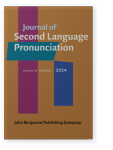Vol. 10:1 (2024) ► pp.59–84
Shadowing textbook and authentic materials in beginning L2 learners’ acquisition of Mandarin Chinese tones in spontaneous speech
Addressing the lack of research examining the use of discourse-level speech input in beginning L2 learners’ Mandarin tone production in spontaneous speech, this study compares the effects of authentic videos and textbook audios as shadowing materials on beginners’ multisyllabic tone production in spontaneous speech and learner attitudes. Fourteen college students, randomly divided into the “authentic” and “textbook” groups, shadowed for four weeks. From the pretest to the posttest, both groups significantly improved tone accuracy in sentence-level spontaneous speech with no significant differences between groups. Quantitative and qualitative analyses of learners’ responses show that (1) both groups had positive attitudes toward the materials, (2) authentic materials generated greater interest, and learners appreciated shadowing authentic conversations or conversations that mimic natural discourse, and (3) the learners primarily cared about whether the materials were comprehensible, interesting, and accessible. The findings shed light on using authentic materials to teach L2 pronunciation.
Article outline
- 1.Introduction
- 2.Literature review
- 2.1Mandarin tones
- 2.2L2 learners’ production of Mandarin tones
- 2.3Mandarin tone instructional methods
- 2.4Authentic materials for pronunciation instruction
- 2.5Summary of literature review
- 3.Method
- 3.1Participants
- 3.2Stimuli
- 3.3Procedure
- 3.3.1Language background questionnaire
- 3.3.2Pretest and posttest
- 3.3.3Shadowing activity
- 3.3.4Questionnaire
- 3.4Analysis
- 3.4.1Tone accuracy
- 3.4.2Learner attitudes
- 4.Results
- 4.1Improvement of tone accuracy
- 4.2Learners’ attitudes solicited through the post-questionnaire
- 4.2.1Quantitative analysis of learner attitudes on the SD scale
- 4.2.2Qualitative analysis of learner attitudes through open-ended questions
- 5.Discussion
- 5.1Tone improvement
- 5.2Learners’ attitude toward the materials and activities
- 5.3Limitations and directions for future research
- 6.Conclusion
- Acknowledgments
-
References
